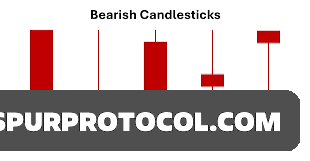THE MARKET PSYCHOLOGY BEHIND A BEARISH CANDLESTICK C
Candlesticks are very important for any trader navigating through different asset classes and paying attention to the psychology behind them is even more important if you want to be able to succeed in the financial market.
Go Back

🕒 1:15 AM
📅 Jun 05, 2025
✍️ By BrigxelBiz
In our earlier article, we talked about the history and anatomy of a candlestick in futures trading, but in this episode, we are going to use an intuitive example to help us create a lucid picture of the market psychology behind the formation of a bearish candlestick.
As pointed out before, a bearish candlestick shows the total buying and selling efforts of traders over a given timeframe which culminates in sellers pushing price to close below the opening price. This is why this candlestick is seen as bearish and it usually has a red colour on many charting tools as it signals the victory of sellers over buyers.
Now let's use a fight analogy as we used in the previous episode of this article regarding a bullish candlestick to also explain how this victory comes about so that things will be intuitively clearer.
Imagine that sellers and the buyers are in a fight. When the fight starts with the opening price, the buyers push the price up to new highs and highs till the highest price, this highest price reached is the high of the candle. This happens as buyers keep buying the asset and this is what forms the higher wick or shadow as seen on a bearish candlestick, but sellers resist the buying by dumping their bags forcing the price of the asset to fall and below the opening price. The selling momentum continues driving prices lower and lower. This is what forms the body of the candlestick; the continued selling pressure.This continues till the lowest price point is discovered which is the low of the candlestick, but buyers once more resist by acquiring more of the asset again to drive price up again and this action leads to the formation of the lower wick or shadow on any bearish candlestick. However, sellers push against this forcing the price to close below the opening price signaling victory for the sellers
It is nice pointing out here that a bearish or red candlestick can signal a potential market exhaustion and weak selling momentum. For example, if a red candlestick has a longer lower shadow and occurs at a key zone like a support level or demand zone, it could be a potential signal for a trend reversal to the upside. This is why a hammer candlestick appearing at this kind of level is interpreted as signifying a potential trend change. Even a Doji at this level could signal indecision in the market and basically long wick candlesticks with longer wicks to the downside are signs of market exhaustion
Let's call it a day here and watch out for the next episode on types of candlesticks
